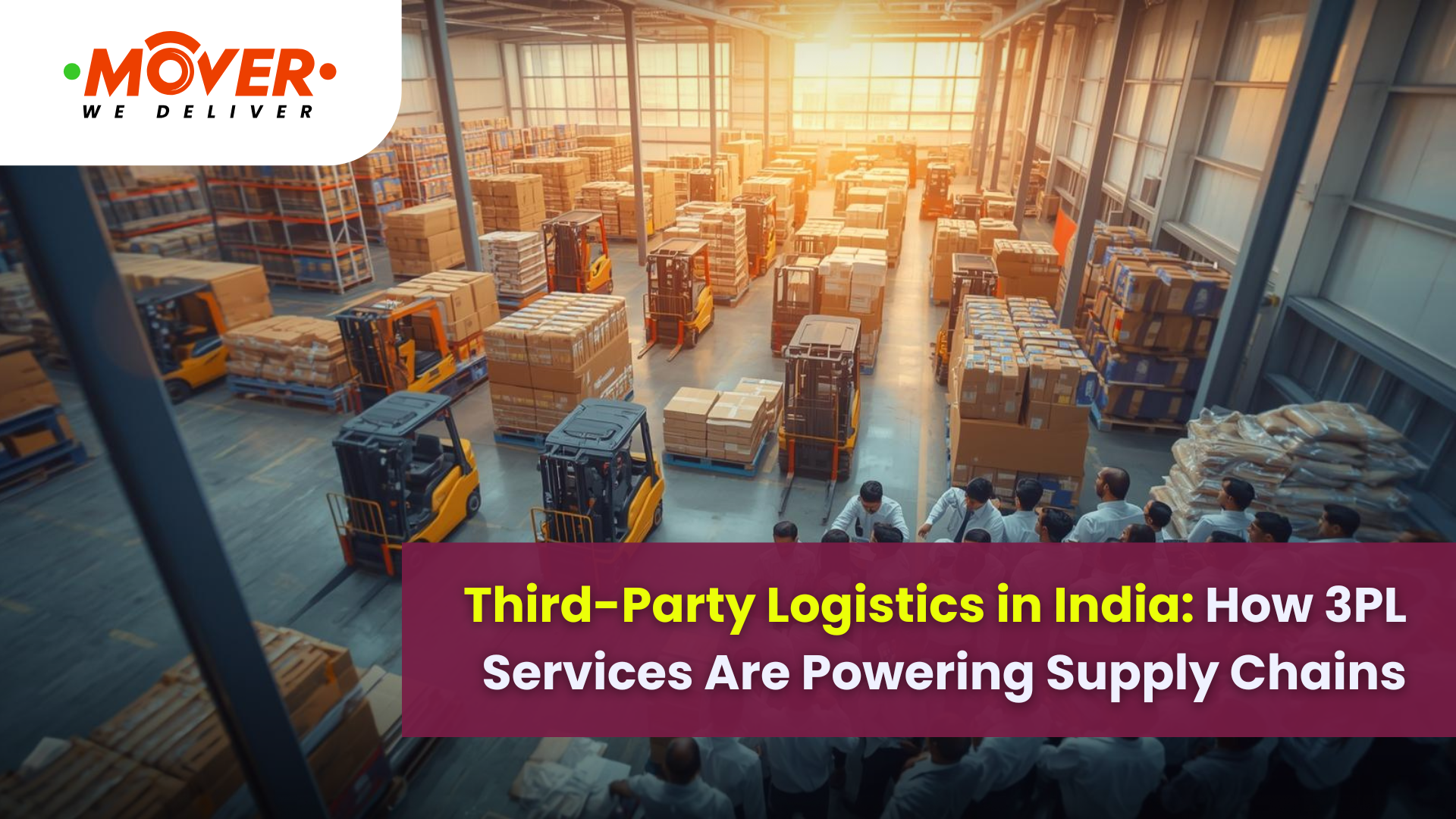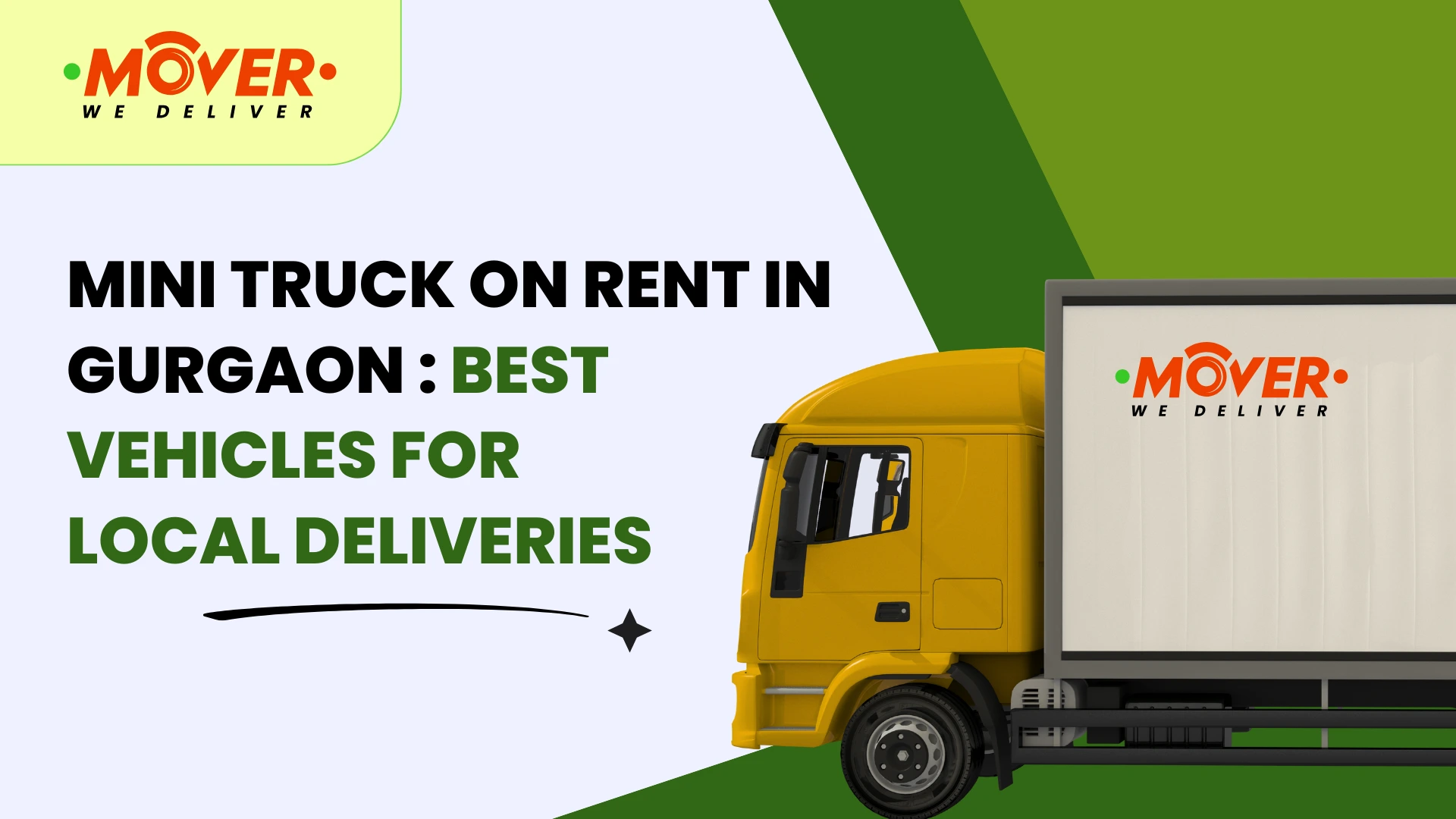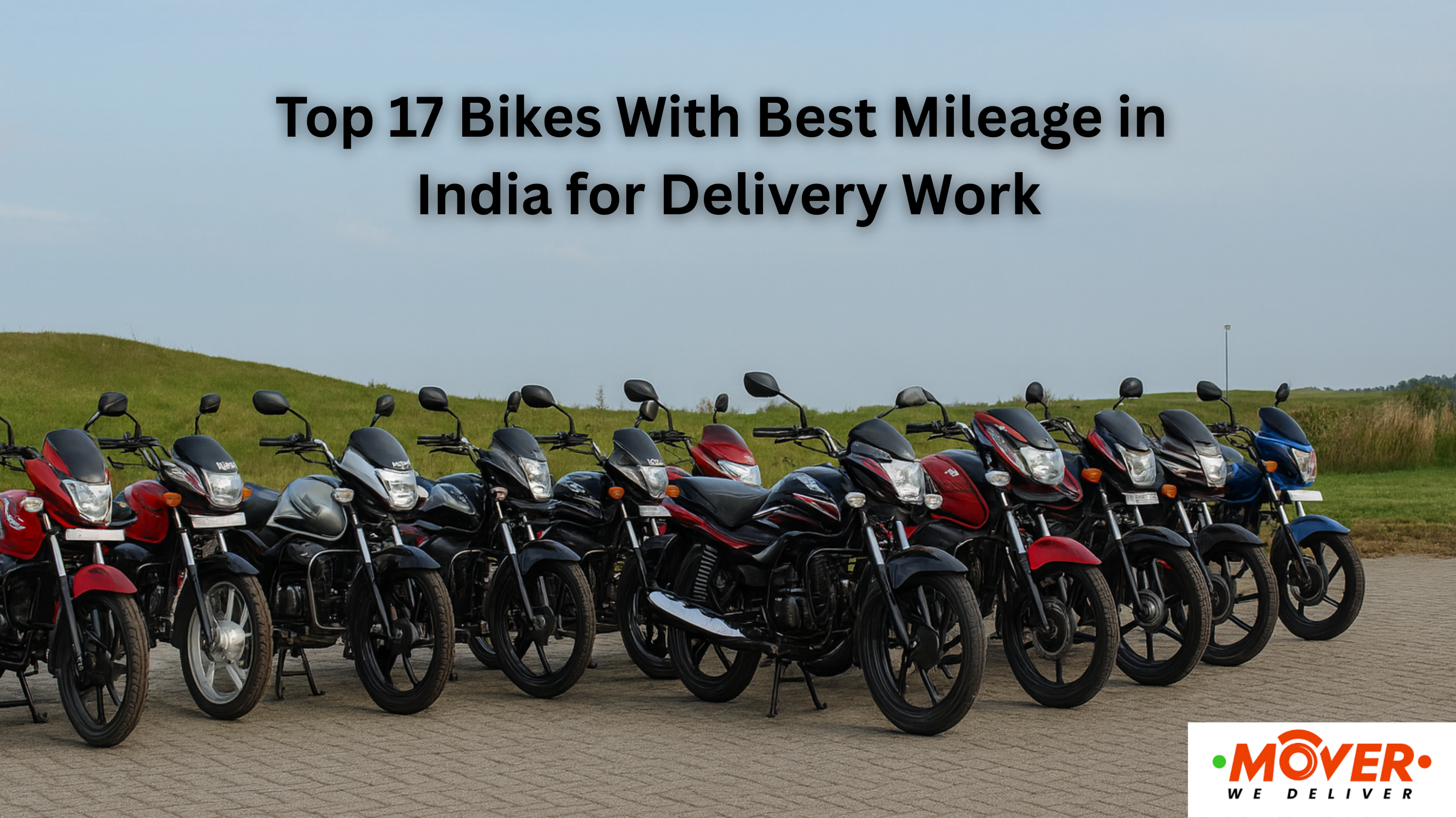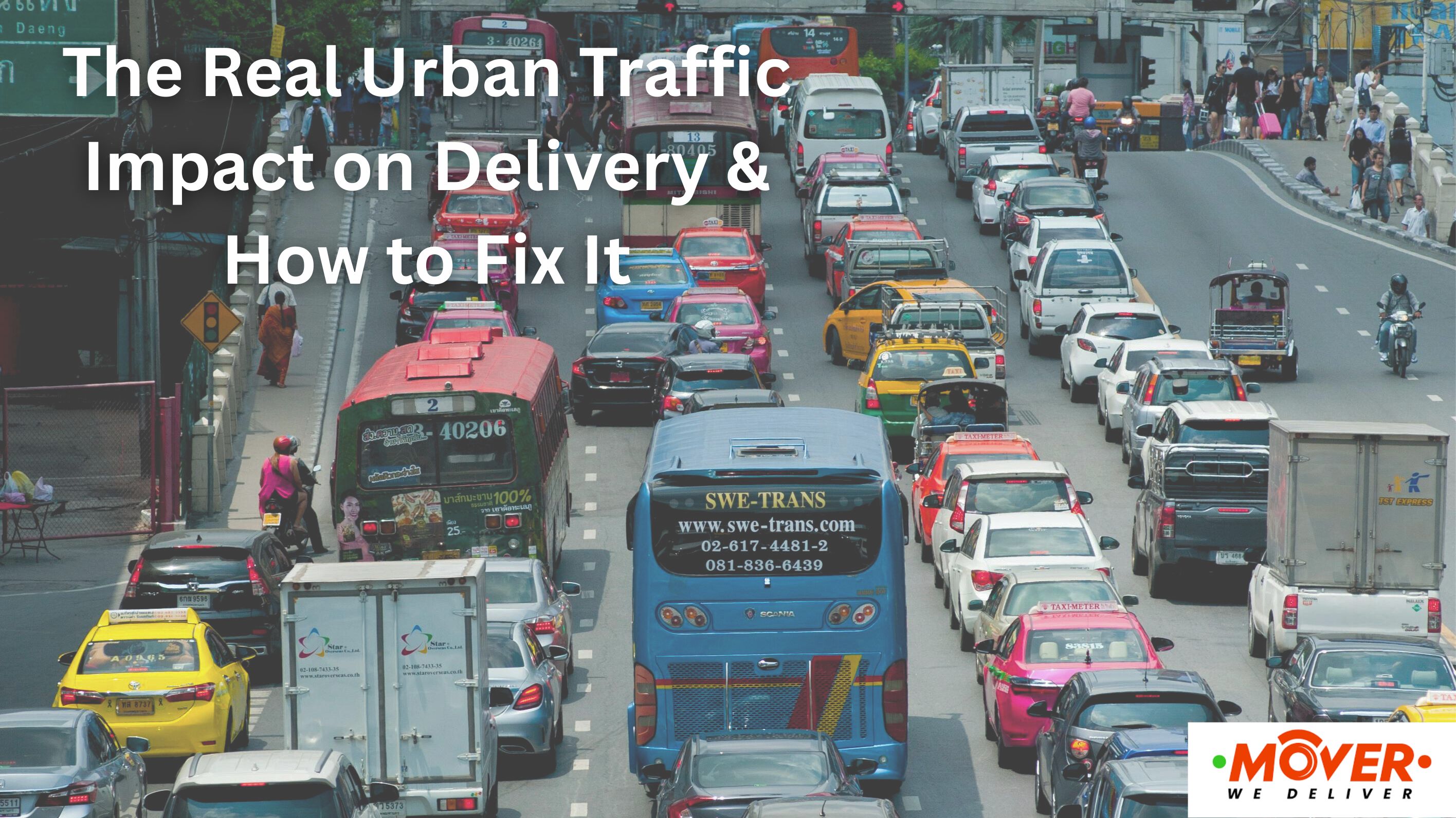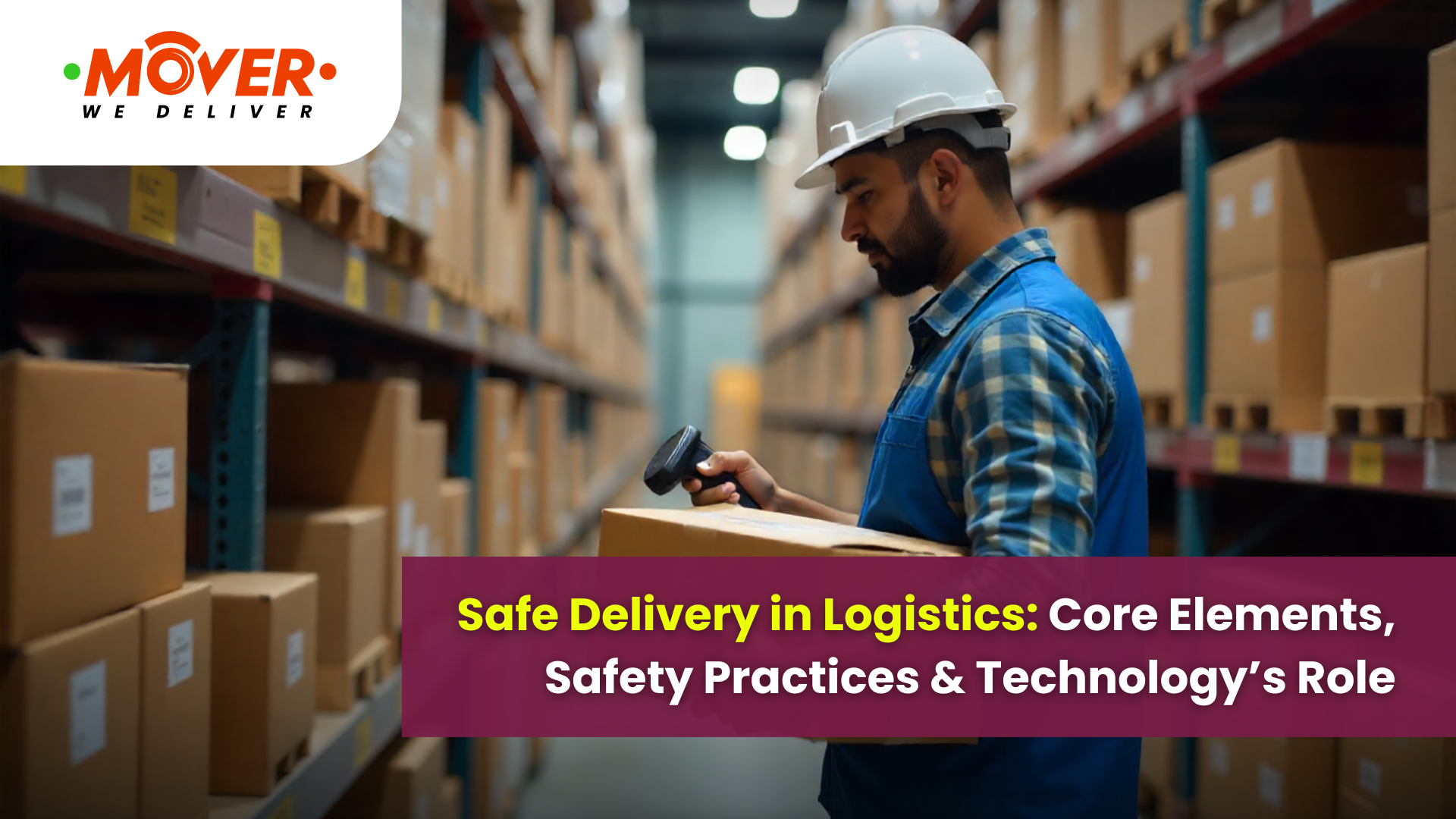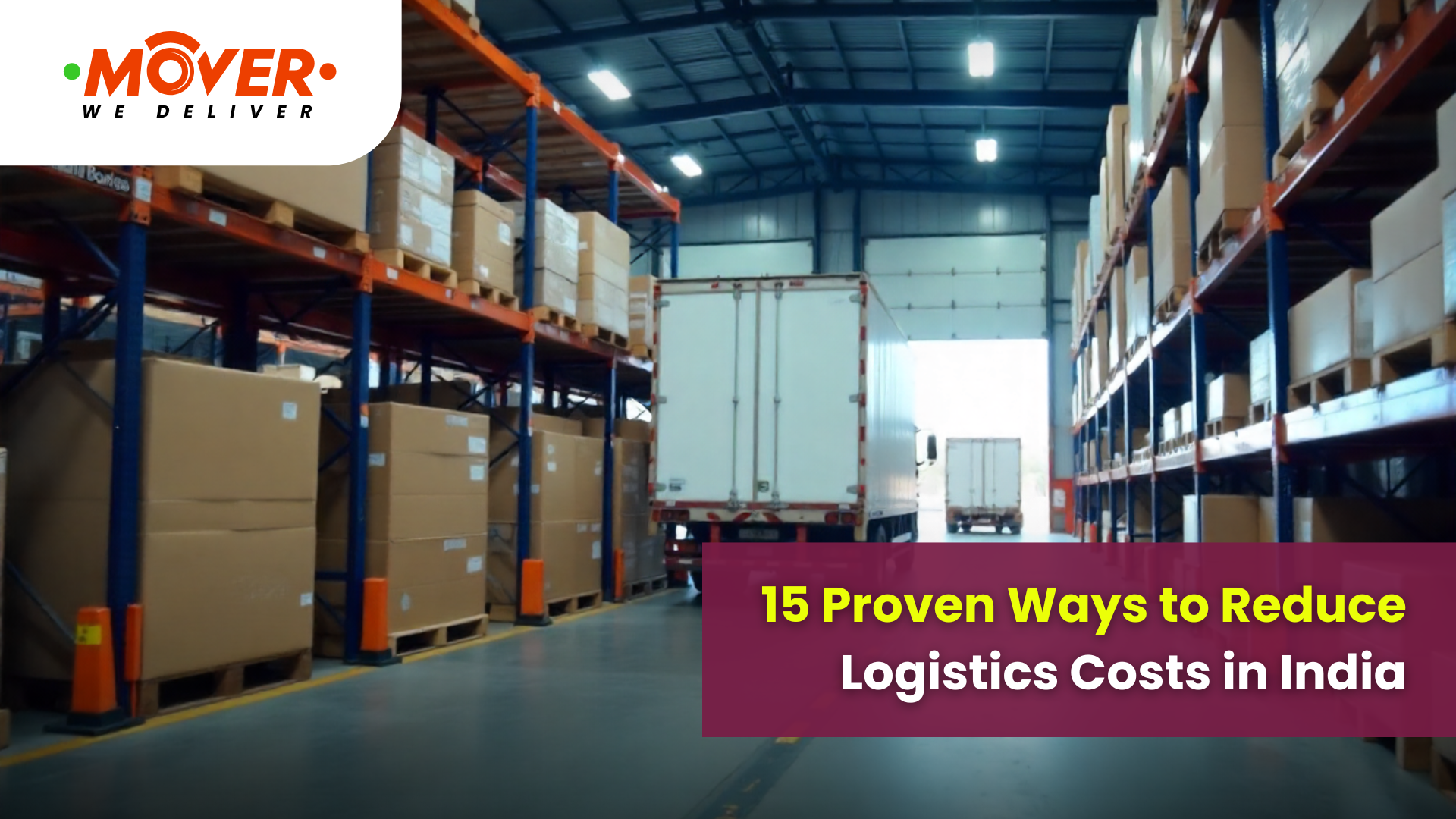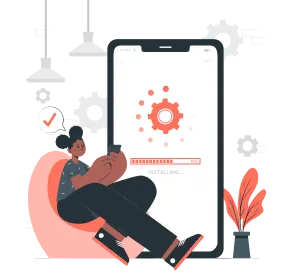Ever wondered how your online order travels from a warehouse in Bengaluru to your doorstep in Gurugram so fast? Welcome to the world of 3PL Market in India, where companies like MOVER are redefining how goods move across the nation. As the sector of e-commerce logistics in India expands and customer expectations rise, the 3PL industry growth in India has taken center stage, helping businesses deliver faster, more efficiently, and at lower costs.
From last-mile bike deliveries to heavy cargo trucking, supply chain and logistics in India now span every aspect of the supply chain. Companies rely on tech-driven 3PL partners to manage warehousing, fleet tracking, and express deliveries, all while cutting costs and boosting efficiency.
As Indian logistics market trends shift toward automation, sustainability, and green logistics, the future belongs to 3PL providers offering innovation and reliability. Let’s explore how the growth of the logistics sector in India is shaping a more connected and competitive economy.
India 3PL Market Insights
India’s third-party logistics (3PL) market was valued at USD 36 billion in 2025, according to The Economic Times. The sector is expected to reach USD 48–73 billion by 2030, growing at a compound annual growth rate (CAGR) of 6–14% between 2025 and 2030.
As per Statista and Mordor Intelligence, the rapid expansion is driven by e-commerce, FMCG, retail, and manufacturing, supported by smart logistics infrastructure and digital tools like GPS tracking and online truck booking platforms.
Key Data at a Glance
-
Market Value: USD 36 Billion in 2025
-
Forecast: USD 48–73 Billion by 2030
-
Annual Growth Rate (CAGR): 6% - 14% (2025–2030)
-
Top Sectors: E-commerce, FMCG, Manufacturing, Retail
-
Emerging Hubs: Tier-2 and Tier-3 cities across India
-
Tech Trends: AI, IoT, warehouse automation, digital payments
-
Policy Support: National Logistics Policy (NLP) and PM Gati Shakti

The Growth Story: Why 3PL is booming in India
The 3PL market in India has seen rapid growth of the logistics sector in India driven by e-commerce, digital transformation, and strong infrastructure investments from both private and government sectors.
-
Growth of E-commerce Logistics in India: With online shopping at its peak, retailers are outsourcing logistics to 3PL companies for faster deliveries, easy returns, and real-time order tracking.
-
Government infrastructure push: Initiatives like Gati Shakti, Bharatmala, and multimodal transport parks are strengthening India’s logistics backbone and supporting 3PL industry growth.
-
Rising need for cost efficiency: Businesses prefer outsourcing to cut warehouse costs, streamline routes, and manage fleets efficiently through digital logistics solutions like MOVER.
-
Diverse client base expansion: From small e-commerce startups to large FMCG giants, companies across sectors are increasingly trusting 3PLs to scale and simplify operations.
What 3PL Market in India Offers: Applications & Services?
These 3PL services and solutions help companies streamline every aspect of logistics, from storage to last-mile delivery, using technology and data insights. Let’s explore key 3PL services and solutions driving this sector.
-
Warehousing and Inventory Management: 3PL providers manage large-scale warehouses with advanced tracking, temperature control, and automation. Many use smart systems to ensure faster order processing and efficient space utilization.
-
Transportation and Freight Services: A major part of logistics outsourcing in India involves road, rail, air, and sea freight solutions. Reliable partners like MOVER help businesses book trucks easily and manage transportation seamlessly.
-
Order Fulfillment and Distribution: 3PLs handle end-to-end delivery processes: picking, packing, labeling, and dispatching products across India. This service is crucial for the fast-growing operations of e-commerce logistics in India.
-
Reverse Logistics and Returns Management: Efficient returns management helps brands retain customer trust. Modern 3PLs ensure smooth collection, inspection, and restocking of returned goods with minimal delays.
-
Technology Integration and Tracking: From GPS tracking to AI-driven route optimization, tech-driven 3PL solutions provide transparency, reduce costs, and improve delivery efficiency across industries.
3PL Market in India: Key Trends & Opportunities
The future of 3PL in India is being shaped by technology, green initiatives, and the evolving demands of modern supply chain networks.
-
Tech-driven 3PL solutions: AI, IoT, and real-time tracking are improving delivery accuracy and transparency. Apps like MOVER allow businesses to manage transportation seamlessly.
-
Warehouse automation and robotics: Warehouse automation and 3PL integration are transforming storage and fulfillment, with robotics improving accuracy and reducing labor dependency.
-
Sustainable and green logistics: The rise of green logistics in India is also prompting companies to adopt renewable energy solutions and carbon-neutral transport operations. Companies are adopting EV fleets, solar-powered warehouses, and recyclable packaging to reduce carbon footprints and align with eco goals.
-
Multi-client fulfillment and scalability: 3PL firms are focusing on multi-client warehousing models, offering flexibility and scalability for seasonal demand spikes.
-
Integration of digital platforms: Cloud-based dashboards and mobile apps are enhancing coordination between shippers, transporters, and customers — making logistics faster and more transparent.
Challenges and Opportunities for 3PL Companies in India
While the 3PL industry in India is growing very fast, it still faces challenges related to infrastructure, compliance, and cost efficiency, creating opportunities for innovation and growth. The evolving market landscape is unlocking multiple 3PL opportunities in India, from urban warehousing to AI-powered route optimization.
-
Infrastructure limitations: Inconsistent road quality, limited cold chain facilities, and congested urban areas often delay deliveries. However, tech-enabled logistics apps like MOVER are helping optimize routes and reduce travel time.
-
Fragmented logistics networks: India’s logistics system is highly unorganized, with multiple small players. This creates opportunities for 3PL providers to build integrated, tech-backed networks across regions.
-
High fuel and operational costs: Rising fuel prices and maintenance costs challenge profitability, but adopting fuel-efficient vehicles and electric fleets can lower expenses and promote green logistics in India.
-
Regulatory and compliance issues: Changing GST norms, state-wise permits, and documentation requirements increase complexity, offering 3PLs the chance to innovate with digital documentation and compliance automation.
-
Talent and technology gaps: The shortage of trained logistics professionals and outdated systems limits scalability. Smart 3PLs invest in workforce training and digital transformation to gain a competitive edge.
Despite these hurdles, emerging 3PL opportunities in India are driven by the growing need for integrated, tech-enabled logistics networks.
Future Outlook: The Road Ahead for India’s 3PL Industry
India’s 3PL sector is set for rapid transformation with digital innovation, sustainability goals, and growing demand from e-commerce and manufacturing industries. As warehouse automation and 3PL partnerships deepen, efficiency and scalability will become the core strengths of Indian logistics. The Indian logistics market trends continue to evolve, and the sector will see deeper integration of technology, automation, and green initiatives.
Let’s discuss the future of 3PL in India:
-
Digitalization and Automation: With digitization and sustainability shaping the future, the growth of the logistics sector in India will continue to attract global investors and new 3PL entrants. The next phase of growth in third-party logistics will rely on technology. AI, IoT, and automation will enhance route optimization, demand forecasting, and real-time tracking.
-
Sustainable Logistics Practices: The focus is shifting toward green supply chains. 3PL companies are adopting electric vehicles, eco-friendly packaging, and energy-efficient warehousing to reduce carbon footprints.
-
Rise of E-commerce and D2C Brands: The boom in online retail and direct-to-consumer brands will continue to drive demand for flexible and scalable logistics outsourcing solutions across India.
-
Integration with Smart Supply Chain and Logistics in India: Smart logistics platforms like MOVER are creating connected networks that simplify deliveries, improve visibility, and support data-driven decision-making for businesses.
-
Government Policies and Infrastructure Growth: Investments in highways, ports, and logistics parks under initiatives like PM Gati Shakti will further boost the 3PL market’s efficiency and reach.
3PL Industry Growth in India: Real-World Case Study and Market Snapshot
From Delhi’s massive logistics corridors to smaller hubs like Indore and Jaipur, India’s 3PL network is quietly powering every click-to-delivery journey we rely on.
1. Why Delhi-NCR Is the Beating Heart of 3PL Growth
The Delhi-NCR region has become one of India’s strongest third-party logistics (3PL) leasing hubs. According to CBRE India, the area saw a sharp rise in warehouse leasing by 3PL and e-commerce companies, thanks to excellent connectivity via expressways and proximity to major consumer markets.
Cities like Gurugram and Faridabad are now central nodes for logistics events in Delhi and distribution networks serving North India. This rapid development is encouraging logistics startups and platforms like MOVER to expand operations and support seamless transport for both small and large businesses.
2. Tier 2 Spotlight: How Tech Is Changing Logistics in Indore
In Indore, a Tier 2 city growing fast in warehousing and manufacturing, local 3PLs are using apps like MOVER to manage end-to-end delivery, from picking up goods to real-time tracking and unloading.
By leveraging tech-based trucking solutions, even smaller businesses can now access on-demand trucks, improving both delivery times and affordability. This shift is helping smaller regions connect with metro markets like Mumbai and Bengaluru, creating a stronger logistics network across India.
Why the Growth of the 3PL Industry in India Matters to You?
Third-party logistics (3PL) may sound like a business term, but it impacts everyone. The rapid growth of the 3PL industry in India means faster online deliveries, more reliable supply chains, new job opportunities, and stronger rural–urban connectivity. As logistics outsourcing in India expands, it fuels e-commerce, tourism, and trade, making daily life smoother, more efficient, and better connected across cities and towns.
Final Verdict
India’s third-party logistics (3PL) sector is transforming rapidly, driven by technology, sustainability, and smart infrastructure. From advanced warehouses in Delhi-NCR to automated freight in Mumbai and Bengaluru, the logistics industry in India is evolving toward greener, more efficient operations. Modern 3PL logistics services are redefining how goods move, making supply chain and logistics in India faster and more cost-effective.
For event organisers and businesses, logistics doesn’t have to be complex. With the MOVER app, truck booking becomes seamless, whether it’s shifting goods from warehouses to venues or managing last-mile deliveries. By blending innovation with reliability, MOVER ensures efficient, transparent logistics operations. As India embraces smarter 3PL solutions, platforms like MOVER will remain central to driving seamless, tech-enabled transport across the nation.
FAQs on 3PL Market in India
1. What is third-party logistics (3PL) in India?
Third-party logistics (3PL) in India involves outsourcing transportation, warehousing, and distribution operations to specialized logistics companies for efficient supply chain management.
2. How big is the 3PL industry in India?
India’s 3PL industry is valued at over USD 75 billion and is growing rapidly, driven by e-commerce expansion, digitalization, and demand for faster logistics solutions.
3. What kind of services do 3PL providers offer?
3PL providers offer warehousing, transportation, freight forwarding, inventory management, packaging, and last-mile delivery to streamline logistics for manufacturers, retailers, and e-commerce companies.
4. Why are companies outsourcing logistics in India?
Businesses outsource logistics in India to reduce operational costs, improve delivery efficiency, gain scalability, and focus on their core business functions.
5. What are the key trends shaping the 3PL market in India?
Automation, green logistics, AI-based tracking, and tech-driven 3PL solutions are shaping India’s logistics market, improving visibility, sustainability, and overall supply chain efficiency.
6. Which cities are emerging as 3PL hubs in India?
Delhi-NCR, Mumbai, Bengaluru, Chennai, and Hyderabad are major 3PL hubs, supported by strong infrastructure, industrial clusters, and increasing demand for e-commerce fulfillment.
7. What challenges do 3PL providers face in India?
Key challenges include poor infrastructure in rural areas, regulatory complexities, high fuel costs, and the need for skilled labor and advanced logistics technology.
8. What is the future outlook for the 3PL industry in India?
The future of India’s 3PL industry looks promising, with growth driven by automation, sustainability, e-commerce, and government initiatives like Gati Shakti and Make in India.
9. How are advancements like warehouse automation affecting 3PL services?
Warehouse automation is revolutionizing 3PL services through robotics, IoT, and AI, boosting efficiency, reducing errors, and enabling faster order processing for clients.
